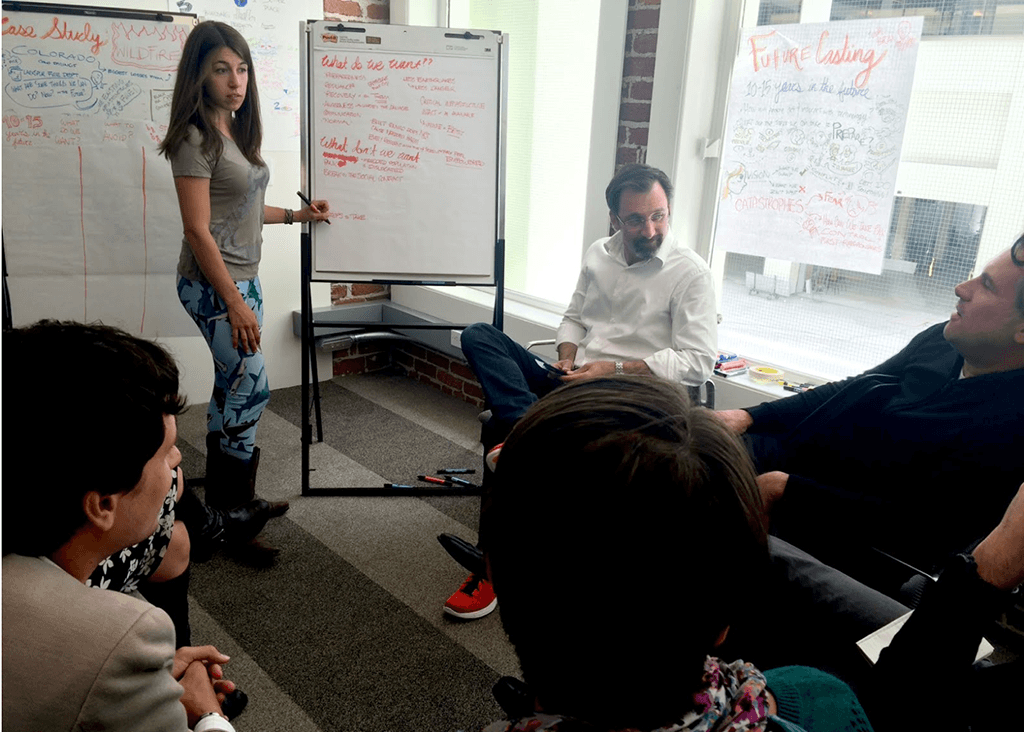
I recently participated in a meeting on innovating for disasters, with futurists, scientists, engineers, and designers. As a graphic note taker, I captured the day's discussions. We focused on earthquake preparedness, the role of fear in disasters, and how design can improve disaster situations.
Last Monday, I was honored to participate in a day-long meeting-of-the-minds on innovating for disasters. The players included futurists, scientists, the State of California Emergency Management Office, the City of San Francisco, engineers, the Field Innovation Team, and engineers/designers from Autodesk. I played the role of graphic note taker — capturing the spirit of the day’s voices in illustrated notes.

So what exactly did we do all day in the beautifully maintained Autodesk gallery? There were presentations (Futurecasting, The California Report Card, What is FIT exactly?, and more) as well as discussions and breakout sessions. Rather than detailing each and every phase of the day’s events, I’d rather summarize some of my own conclusions.
San Francisco is drastically behind on earthquake preparedness. The number of unsafe buildings in our city makes engineers from other countries cringe! Futurecasting (the process of predicting the future and anticipating what we can do about it) produced a myriad of ideas on how to prepare as well as how to react.
One of my biggest take-aways was something @IntelFuturist said about fear in a disaster situation and how the conversation and the way in which we articulate disasters needs to be changed. The media and responders will tell the survivors either “Everything is OK” or “We’re all going to die!” when really we should be saying:

FIT (http://www.fieldinnovationteam.org) is an incredible organization. The passion and fervor for what they do is immediately evident when you speak to any one of them. It was truly a pleasure to work with them. I believe as designers, we really can design a better experience for disaster situations. In a situation where data can mean life or death, data needs to be distilled into digestible information. FIT uses the collective intelligence of bright and diverse thinkers, as well as the cutting edge of technology, to create solutions to what can seem like hugely complex and difficult problems.
There’s a need out there for designing beyond the computer screen. EchoUser has touched on this with rethinking BART, as well as the way in which we approach the design process — i.e. evaluating design problems from the moment that the user starts their day rather than merely from the moment a user logs on or plugs in. It seems we’re doing something right, and perhaps we’re destined for larger challenges to tackle in the future. Wildfires? Asteroids? Earthquakes? Bring it on.


Only for an organization as rad as FIT would I wear my infamous #sharktights
